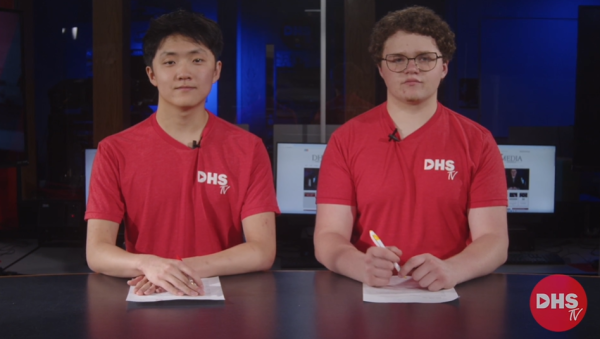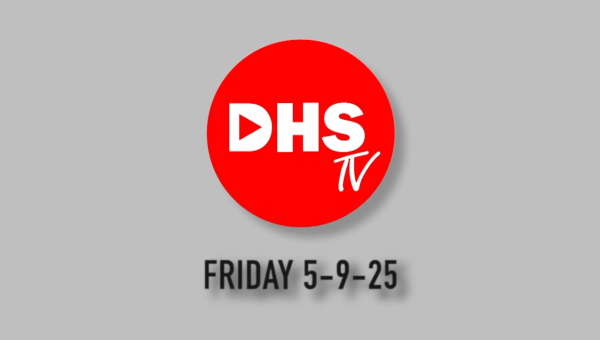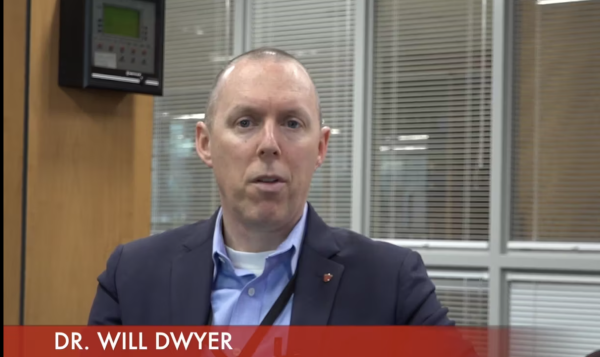Chromebooks provide new learning envirnoment
After five years of planning, the 1:1 Chromebook Initiative proposed by District 113 to HPHS and DHS has been put into effect. This program provides sophomores and freshmen with personal Chromebooks.
As part of a District 109 pilot program, half of the current freshmen who attended Shepard and Caruso used Chromebooks last year. The DHS students who did not use Chromebooks last year have noticed significant changes in their school work and classroom experience this August and September.
“I think that it’s much different from last year, since I didn’t have a Chromebook, because you are responsible for it 24/7. You have to carry it around and charge it all the time. But, you can also do other things during class on the Chromebooks. It is really easy to get off track with these,” freshman Delaney Culver said.
The Chromebooks allow students to have direct and easy access to the Internet and all of their online documents, resulting in a de-emphasis on paper materials.
“It’s a tool. Classes will not be based solely around these Chromebooks, but they will be an aid to the students,” Director of Technology Maureen Darnaby said.
Inside freshmen and sophomore classes, teachers have been compelled to adjust their teaching styles to accommodate the Chromebooks. Many teachers enjoy having them in class, but there are also some disadvantages.
“I was really nervous about these [Chromebooks] being involved in our everyday class. So last spring, Mrs. Craig-Naples and I took an online ‘e-learning’ course, so we can learn how to use these in the classroom. About half of that stuff seemed like it just wasn’t focusing on the actual learning part of a classroom,” English teacher Buffy Sallee, who teaches two sections of freshmen English, said.
Sallee believes that students learn better while engaged in face-to-face communication, rather than typing individual papers on a screen.
“Freshmen English is a class that really focuses on the basics and the simplicities of writing. As a class, we only use the Chromebooks once a week or so. Also, when we do use the Chromebooks in class, the students have to go to a computer lab in order to print out their work anyways,” Sallee said.
Students too are adjusting to the integration of Chromebooks into a classroom setting. Some students have had issues with the Chromebooks, but it seems that many students benefit from Chromebook use in class.
“I think these Chromebooks are an advantage . . . It’s much easier during class. Instead of going to the computer lab or library to do work on computers, we have all of online documents right in front of us in class,” freshman Reese Bressler said.
Darnaby thinks the program is working well for the freshmen and sophomores who are the first to try out this new 1:1 Initiative.
“This program has gone very smoothly. We have had very minor setbacks, such as Chromebooks breaking, but there haven’t been any major problems,” Darnaby said.
The Chromebooks assist students in the classroom because they allow students to communicate with their teachers quickly and they offer new opportunities for class discussion. They provide students with access to all of the Google apps that may help them in the class. To ensure that the Chromebooks remain and effective tool, Darnaby has some advice for students.
“Students should treat their Chromebook like their phone. Charge it overnight, so when they come to school, it will be fully charged. If the computer is not charged, the student will have a tough time in class. Also, with classrooms that have a mix of students from different classes, there will be extra Chromebooks that can be distributed to upperclassmen who do not have them,” Darnaby said.
The Chromebooks serve as segue to a new way of instruction for teachers and a new way of learning for students. While the adjustment may be tough, many people are confident that the program will succeed. The technology department has plans to continue this initiative in the future.





